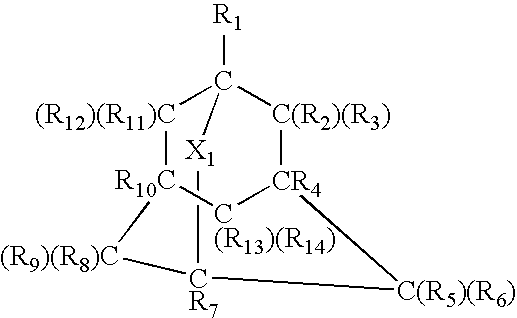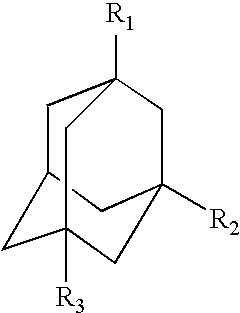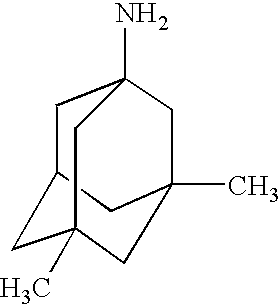Method for treating autism
a technology for autism and treatment methods, applied in the field of autism treatment methods, can solve the problems of autism children and adults who have difficulty in verbal and non-verbal communication, social interactions, and how to most effectively work with individuals with disabilities, and the effect of disability
- Summary
- Abstract
- Description
- Claims
- Application Information
AI Technical Summary
Benefits of technology
Problems solved by technology
Method used
Image
Examples
second embodiment
[0037] In the present invention, the first medicament is represented by the following chemical structure:
wherein R1-3 are the same or different and comprise H, an amino group, a primary amine, a secondary amine, a tertiary amine, a quaternary ammonium group, a hydroxy group, a straight or branched alkyl, cycloalkyl, polocycloalkyl, heterocycloalkyl, aryl, alkaryl, aralkyl, alkoxy, alkenyl, alkynyl group containing approximately 1 to approximately 50 carbon atom(s), a silyl or siloxyl group containing approximately 1 to approximately 50 silicon atom(s), and combinations thereof.
third embodiment
[0038] In the present invention, the first medicament is represented by the following chemical structure:
and may, specifically, comprise the hydrochloride salt provided herein below represented by the following chemical structure:
[0039] For purposes of clarity, and in an attempt to eliminate any potential ambiguity associated with the nomenclature of the above-identified medicament, it will be understood that the specific medicament provided herein above is defined as 1-amino-3,5-dimethyladamantane hydrochloride, which is commercially available from Merz under the trade name memantine.
[0040] It will be understood that an “effective amount” of one or more above-identified medicament(s) can be administered, via any one of a number of conventional means, to an autistic patient / subject. Preferably, the effective does of the first medicament ranges from approximately 1 milligram (mg) to approximately 100 mg per day, and more preferably ranges from approximately 5 mg to approximatel...
PUM
| Property | Measurement | Unit |
|---|---|---|
| weight | aaaaa | aaaaa |
| chemical structure | aaaaa | aaaaa |
| Diagnostic & Statistical Manual of Mental Disorders | aaaaa | aaaaa |
Abstract
Description
Claims
Application Information
 Login to View More
Login to View More - R&D
- Intellectual Property
- Life Sciences
- Materials
- Tech Scout
- Unparalleled Data Quality
- Higher Quality Content
- 60% Fewer Hallucinations
Browse by: Latest US Patents, China's latest patents, Technical Efficacy Thesaurus, Application Domain, Technology Topic, Popular Technical Reports.
© 2025 PatSnap. All rights reserved.Legal|Privacy policy|Modern Slavery Act Transparency Statement|Sitemap|About US| Contact US: help@patsnap.com



